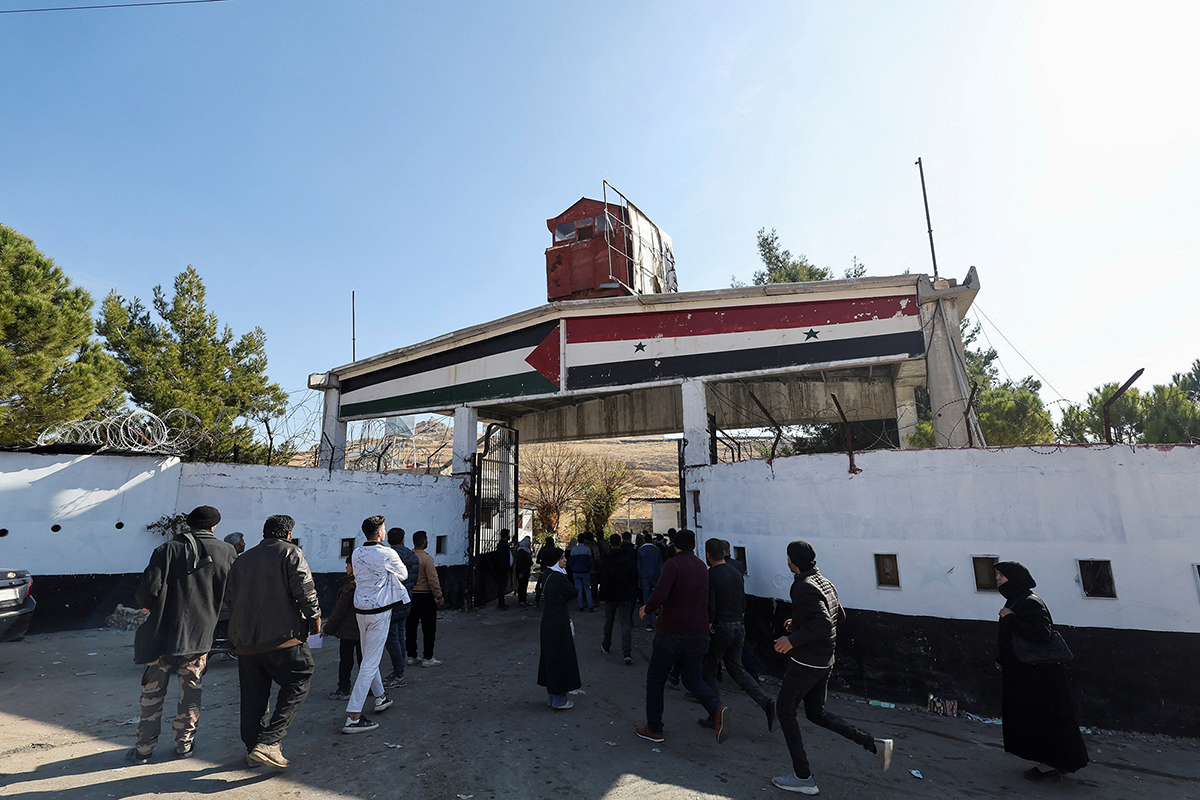Military pilgrimage to Lourdes is ‘experience of fraternity,’ military bishop says

PARIS — Nearly 15,000 military personnel from 40 countries gathered at the French Marian sanctuary in Lourdes May 24-26 for the International Military Pilgrimage. After the Bastille Day celebration July 14, France’s biggest national holiday, the Lourdes military pilgrimage is the most important gathering of its kind for the army.
“It is a unique event in the world,” Bishop Antoine de Romanet said. Formerly pastor of St. Louis de France Church in Washington, D.C., from 2002 to 2010, he is now military bishop for the French armed forces. Every year, he presides over this extraordinary pilgrimage.
“Just imagine!” he exclaimed, “thousands of soldiers in various uniforms, with the flags and musical groups of their countries, numerous chiefs of staff and general officers, ministers, ambassadors and some 20 bishops. Members of London’s Buckingham Palace Guard and even the Vatican’s Swiss Guards can be seen. The whole thing looks great!” the bishop said.
The pilgrimage included moments of recollection, ceremonies, prayers and processions. This year Bishop de Romanet celebrated 150 baptisms and 300 confirmations. Other noteable attendees included Archbishop Timothy P. Broglio of the U.S. Archdiocese for the Military Services and president of the U.S. Conference of Catholic Bishops; and Archbishop Paul Gallagher, the Vatican’s secretary for relations with states.
“People drink more beer than Lourdes water, but it is no big deal!” Bishop de Romanet said with a smile. “We live an experience of fraternity, and we pray together for reconciliation and peace. It is a very powerful moment.”
The first international military pilgrimage took place in 1958, exactly 100 years after the apparitions of the Virgin Mary in Lourdes. “It stemmed from the Franco-German reconciliation after World War II,” Bishop de Romanet said.
The idea was born in the midst of World War II, when members of the French military visited the site of St. Bernadette’s apparitions, offering prayers for peace.
In December 1944, U.S. military personnel joined British, Belgian, French and Russian military representatives for a Mass at the Basilica of Our Lady of the Rosary. After the war, French soldiers and their chaplains invited German soldiers and their chaplains to pray together.
The purpose of the reconciliation initiative was to heal physical, emotional, and spiritual wounds and to recognize the common identity as Christians in search of peace by former war rivalries.
In France, the military chaplaincy dates back over 140 years, and includes Catholic, Protestant, Jewish and Muslim chaplains.
“The presence of the Catholic chaplaincy is particularly important because France is a country with a Catholic tradition,” Bishop de Romanet said. “But France was a pioneer in setting up a military chaplaincy service representative of the diversity of the main religions in French society.”
Military chaplaincy falls within the framework of the 1905 law of separation of Church and state, which guarantees freedom of worship, with the French state paying military chaplains. “The primary mission of chaplains is to enable religious practice,” Bishop de Romanet said. “Practicing Catholics among the military, who train in the middle of the Sahara for months on end, need to be able to attend Mass and receive the sacrament of reconciliation.”
“The chaplain offers everyone an attentive and discreet human ear, outside the military hierarchy,” Bishop de Romanet added. “Any member of the military can talk to him.”
“The chaplain is also there to advise the military hierarchy on elements of conflict that have a religious dimension. And he can pass on to commanders what he perceives of the morale of soldiers, their frustrations and any uneasiness.”
“We do not cost much,” Bishop de Romanet said. “But everyone recognizes that we serve the fortitude that the army needs. We bring a spiritual dimension that is justified because soldiers come into contact with death. They can be ordered to kill, and they take the risk of being killed themselves.”
“Psychological symptoms due to trauma during wars are a matter for psychologists,” he continued. “But for our part, we must be attentive to the moral wounds, and to what can distort the moral conscience of soldiers if they witness or are guilty of terrible acts.”
“You cannot kill with impunity,” Bishop de Romanet said. “In this context, chaplains play a decisive role. They are willing to face up to danger, fear and extreme violence, to help ensure that the profession of arms is never mechanical or soulless, likely to lead to the perpetration of the worst atrocities. That is the job of chaplaincy.”
A few days after the military pilgrimage to Lourdes, Bishop de Romanet will travel to Normandy to attend the official ceremony marking the 80th anniversary of the Allied Forces landings on June 6, 1944, which liberated France during World War II. It will take place in the presence of numerous heads of state, at Saint-Laurent-sur-Mer, near Omaha Beach, one of the five D-Day landing beaches.
Among 160,000 Allied troops that landed in Normandy, 59,000 Americans took part in the D-Day landings. The ceremony on June 6 will be the last major anniversary in the presence of those who witnessed this historic moment.


